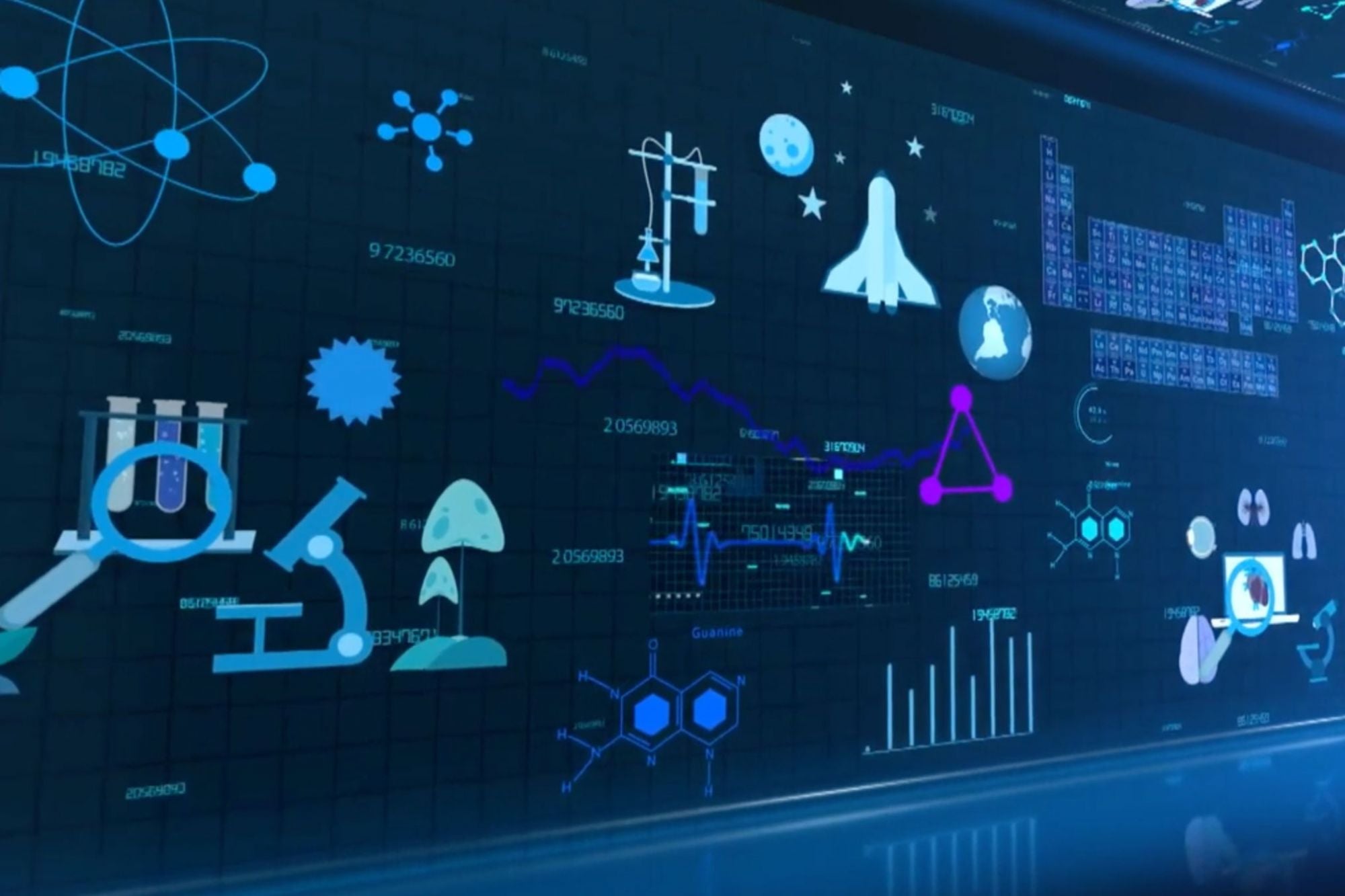The Potential Of Space-Grown Crystals In Pharmaceutical Research

Table of Contents
The Advantages of Microgravity for Crystal Growth
The near-weightless environment of microgravity offers significant advantages for crystal growth, leading to superior crystal quality compared to Earth-based methods.
Superior Crystal Quality
The absence of convection currents—the movement of fluids due to differences in density—in microgravity is the primary reason for the enhanced quality of space-grown crystals. On Earth, these currents disrupt the delicate process of crystal formation, leading to smaller, less perfect crystals with numerous defects. In contrast, microgravity allows for a more uniform and undisturbed growth environment, resulting in:
- Increased crystal size: Larger crystals provide more material for analysis, improving the accuracy of structural determination.
- Improved diffraction quality: Higher quality crystals diffract X-rays more efficiently, leading to higher-resolution structural data.
- Higher resolution in structural analysis: This allows scientists to better understand the intricate details of protein structures, crucial for drug design.
- Enhanced purity: Reduced contamination and defects result in purer crystals, providing more reliable data for pharmaceutical research.
These improvements directly translate into better accuracy in determining protein structures, a fundamental requirement for effective structure-based drug design.
Challenges in Terrestrial Crystal Growth
Earth-based protein crystallization techniques face significant limitations:
- Smaller crystal size: Convection currents and sedimentation cause smaller, less uniform crystals.
- Imperfections: These imperfections lead to poor diffraction quality, hindering structural analysis.
- Lower resolution data: Limited resolution data makes it difficult to accurately determine protein structures.
- Difficulty in obtaining high-quality crystals for complex proteins: Many therapeutically important proteins are notoriously difficult to crystallize on Earth.
These limitations significantly hinder the development of new drugs and therapies, lengthening the drug development process and increasing its cost.
Applications of Space-Grown Crystals in Pharmaceutical Research
The superior quality of space-grown crystals has profound implications for various aspects of pharmaceutical research.
Protein Crystallization for Drug Discovery
High-quality space-grown protein crystals are invaluable for:
- Structure-based drug design: Detailed structural information allows scientists to design drugs that specifically target a protein's active site.
- Identification of drug targets: Understanding protein structures helps identify promising targets for new therapies.
- Development of new therapeutic agents: Improved structural data can lead to the development of more effective and safer drugs.
- Improved drug efficacy: Drugs designed based on precise structural information are more likely to be effective.
For example, research on space-grown crystals has already contributed to a better understanding of various enzymes and receptors relevant to diseases like cancer and HIV.
Accelerating Drug Development Pipelines
The improved quality of space-grown crystals translates into significant time and cost savings in drug development:
- Faster structure determination: High-resolution data leads to quicker and more accurate structural analysis.
- Efficient drug screening: Better crystals allow for more efficient screening of potential drug candidates.
- Reduced reliance on iterative optimization: Improved initial data reduces the need for repeated optimization steps.
- Improved clinical trial success rates: Drugs designed with more accurate structural information have a higher likelihood of success in clinical trials.
This acceleration has profound economic implications, potentially leading to faster access to life-saving medications and reducing overall healthcare costs.
Current and Future Space-Based Crystallization Research
Significant progress is being made in utilizing the unique environment of space for pharmaceutical crystal growth.
International Space Station (ISS) Experiments
Numerous experiments on the International Space Station (ISS) have demonstrated the benefits of microgravity for protein crystallization. Projects like the Protein Crystal Growth (PCG) facility have yielded high-quality crystals of various proteins, contributing to significant advancements in drug discovery. These experiments involve collaborations between leading researchers and organizations worldwide. (Links to relevant research papers and publications would be inserted here).
Future Technological Advancements
Several advancements are poised to further enhance space-based crystal growth:
- Autonomous crystal growth systems: These systems will reduce the need for human intervention, making space-based crystallization more efficient.
- Advanced imaging techniques: Improved imaging technologies will allow for real-time monitoring of crystal growth, optimizing the process.
- Improved data analysis methods: Advanced computational tools will help analyze the vast amounts of data generated from space-grown crystals.
Future initiatives may include dedicated space-based facilities for crystal growth, or increased partnerships between space agencies and pharmaceutical companies, ensuring a continuous pipeline of groundbreaking research.
Conclusion
Space-grown crystals hold immense promise for revolutionizing pharmaceutical research. Their superior quality, leading to faster, more cost-effective drug discovery and development, is undeniable. The improved resolution in structural analysis allows for a deeper understanding of protein structures and their interactions with potential drugs, ultimately leading to better, safer, and more effective therapies. Explore the future of pharmaceutical research with space-grown crystals—discover how this groundbreaking technology is shaping the landscape of drug discovery and unlocking advancements in human health.

Featured Posts
-
 Tretiy Final Kubka Billi Dzhin King Dlya Kazakhstana
May 23, 2025
Tretiy Final Kubka Billi Dzhin King Dlya Kazakhstana
May 23, 2025 -
 Airlift Success 96 Cows Safely Removed From Swiss Village
May 23, 2025
Airlift Success 96 Cows Safely Removed From Swiss Village
May 23, 2025 -
 Muzarabanis 100 Test Wicket Target A Realistic Dream
May 23, 2025
Muzarabanis 100 Test Wicket Target A Realistic Dream
May 23, 2025 -
 Dylan Dreyers Postpartum Body Transformation On The Today Show
May 23, 2025
Dylan Dreyers Postpartum Body Transformation On The Today Show
May 23, 2025 -
 Big Rig Rock Report 3 12 Key Highlights From 99 5 The Fox
May 23, 2025
Big Rig Rock Report 3 12 Key Highlights From 99 5 The Fox
May 23, 2025
Latest Posts
-
 Top Gear Recommendations For Ferrari Lovers
May 24, 2025
Top Gear Recommendations For Ferrari Lovers
May 24, 2025 -
 Ferrari Owners Guide Key Gear And Accessories
May 24, 2025
Ferrari Owners Guide Key Gear And Accessories
May 24, 2025 -
 Neues Aus Essen Berichte Von Der Umgebung Des Uniklinikums
May 24, 2025
Neues Aus Essen Berichte Von Der Umgebung Des Uniklinikums
May 24, 2025 -
 In Der Naehe Des Essener Uniklinikums Eine Bewegende Geschichte
May 24, 2025
In Der Naehe Des Essener Uniklinikums Eine Bewegende Geschichte
May 24, 2025 -
 Alajhzt Alamnyt Alalmanyt Wmdahmat Almshjeyn Ma Hy Alasbab
May 24, 2025
Alajhzt Alamnyt Alalmanyt Wmdahmat Almshjeyn Ma Hy Alasbab
May 24, 2025
